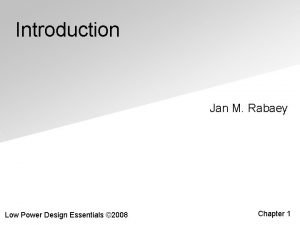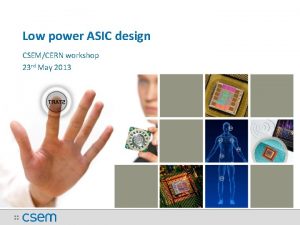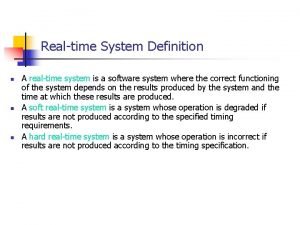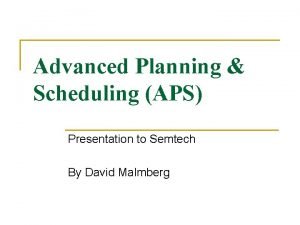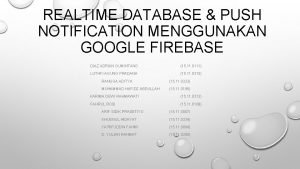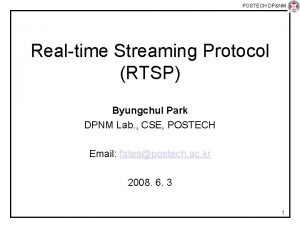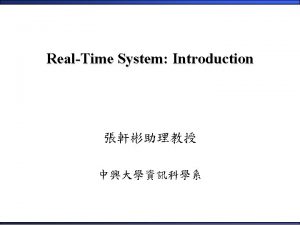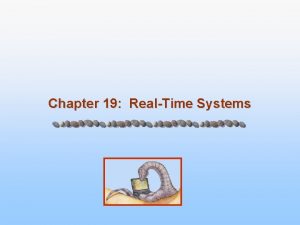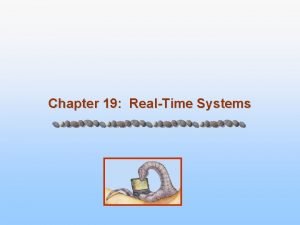Low Power Design for RealTime Systems Low power







- Slides: 7

Low Power Design for Real-Time Systems ¢ Low power (energy) consumption is a key design for embedded systems l Battery’s life during operation l Reliability l Size of the system ¢ Power-aware real-time scheduling l Minimize the energy consumption while satisfying the real-time constraints.

Dynamic Voltage Scaling (DVS) Technique for Real-Time Task ¢ ¢ CPU’s energy/power consumption is a convex function of the CPU’s speed, e. g. P = CV 2 f -> P = s 3. Slowing down CPU’s speed reduces the energy usage for CPU. Saving energy consumption v. s. Meeting deadline. l Reducing the CPU’s speed as much as possible while meeting every task’s deadline. l A minimum constant speed is always an optimal solution (if possible). l If more than one speed are needed, a “smooth” selection is better. For regular single instance real-time jobs with only one feasible interval, Yao designed an algorithm for computing the optimal solution.

Considering power consumption for leakage current ¢ As VLSI technology marches towards deep submicron and nanoscale circuits operating at multi-GHz frequencies, the rapidly elevated leakage power dissipation will soon become comparable to, if not exceeding, the dynamic power consumption: l Pleak = I leak V l P = Pdyn + Pleak l A critical speed s* = s where P(s) = P’(s)s l Shut down the CPU when it is idle. • Shut-down overhead.

Real. Energy: a New Framework and Tool to Evaluate Power-Aware Real-Time Scheduling Algorithms Intel XScale/PXA 255 Module

Example of the Measured Current using Real. Energy

Actual Energy Consumption Using DVS as meaured by Real. Energy

References ¢ ¢ J. Lin and A. M. K. Cheng, “Real-time Task Assignment in Recharegable Multiprocessor Systems, ” Proc. 14 th IEEE International Conference on Embedded and Real-Time Computing Systems and Applications (RTCSA), Kaohsiung, Taiwan, Aug. 2006. J. Lin and A. M. K. Cheng, ``Real-time Task Assignment in Heterogeneous Distributed Systems with Rechargeable Batteries, '' IEEE International Conference on Advanced Information Networking and Applications (AINA), Bradford, UK, May 26 -29, 2009. J. Lin and A. M. K. Cheng, ``Power-aware scheduling for Multiple Feasible Interval Jobs, '' Proc. 15 th IEEE-CS International Conference on Embedded and Real-Time Computing Systems and Applications (RTCSA), Beijing, China, Aug. 2009. Nominated for Best Paper Award. J. Lin, W. Song, A. M. K. Cheng ``Real. Energy: a New Framework and a Case Study to Evaluate Power-Aware Real-Time Scheduling Algorithms , '' to appear in ACM International Symposium on Low Power Electronics and Design (ISLPED), Austin, Texas, USA, August 18 -20, 2010.
